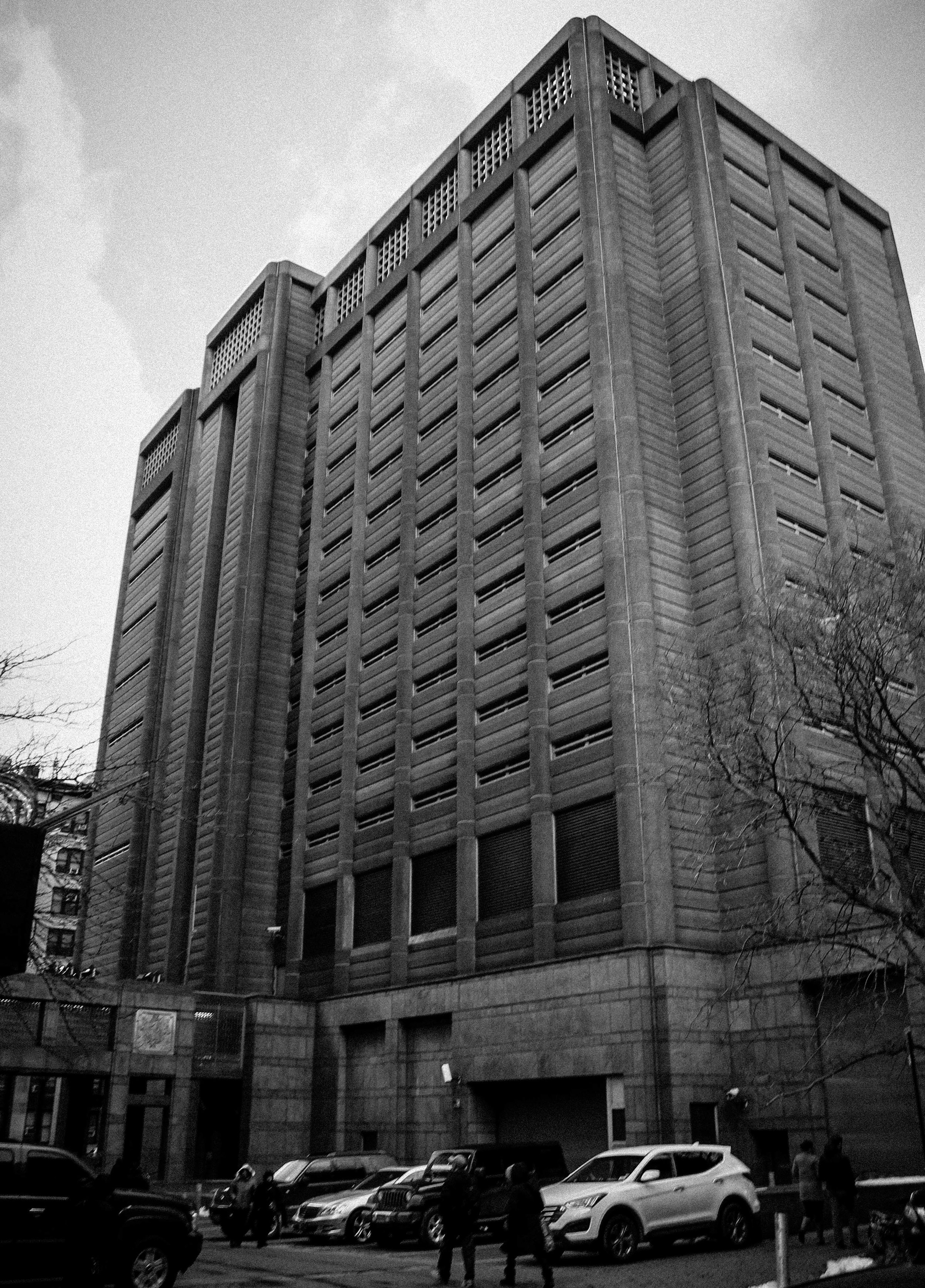MANHATTAN DETENTION COMPLEX
(NYC URBANISM)
Manhattan Detention Complex (The Tombs)
Date: 1989
Architect: Urbahn Associates Inc & Litchfield-Grosfeld Associates
Address: 125 White Street
Use: City Jail (Manhattan Central Booking)
(NYC URBANISM)
The "Tombs," Manhattan's central booking or Detention Complex as it is officially titled, got its name from the first jail built on this site, which resembled an Egyptian Mausoleum when it opened in 1838. The land was developed in 1817 by filling in the city's original clean water source, Collect Pond. By 1897, the Egyptian Revival "Tombs" was demolished to make way its replacement, located on the west side of Centre Street. The conically roofed, gray structure would open in 1902 and was connected to the courthouse by the infamous "Bridge of Sighs." The old courthouse was demolished and an entire block was cleared on the east side of Centre Street for a new courthouse and jail. In 1942, a modern Art Deco E-shaped high-rise structure with recessed entrances and a ziggurat at its peak, designed by Harvey Wiley Corbett, opened. A freestanding tower, to the north of the complex, connected by an elevated pedestrian "bridge of sighs" became the new "Tombs" city jail. By the 1970s the Tombs had become one of the most notorious jails in the city. Known for its terrible conditions it housed on average 2,000 inmates in a 15-story tower only designed for 925. After a riot in 1974, the Tombs was closed indefinitely when a judge ruled the jail's conditions violated inmates' constitutional rights. In 1983, after a complete remodel, the structure partially re-opened, but due to inmate overcrowding throughout the city, plans were drawn up to build a new extension on the block to the north, bounded by Centre, Baxter, Walker and White Streets.This extension, officially named the Manhattan Detention Complex, was designed by Urbahn Associates and opened in 1990. Despite the official name, and it being the fourth incarnation of the jail, the "Tombs" name stuck.
The bulky facade is clad in a reddish-pink concrete, with rounded bands extending along the building, projecting its verticality. The few windows are narrow horizontal slits in the concrete, recessed and covered with metal bars. The tower sits on a windowless granite two-story base that serves as the entranceway, houses the few clearly separate retail spaces, and connects the elevated pedestrian bridge to the older south tower.
(NYC URBANISM)
The building has multiple sub-levels below the street with "bullpen" jail cells, created to house many inmates at once, along with underground tunnels connecting to the southern building and adjacent courthouse. The tower holds 500 beds, almost a quarter more than the 381 bed south tower. Due to pressure from community groups in Chinatown, commercial space on the ground level was incorporated into the building. The Tombs serves as Manhattan's "Central Booking" holding anyone arrested in the borough before they see a judge. If convicted, or not released on bail, prisoners are then sent to Rikers Island or other upstate prisons where they complete longer sentences. Because of this, most people in the Tombs have not been convicted of a crime.
The structure establishes a clear tripartite division; a smooth granite base with planar horizontal banding, pillow-like red concrete in the middle, along the body engaged vertical columns, and a concrete lattice on top enclosing the roof. The rustication occurs in the middle, along the body of the building,32 and not at the bottom. This may be to suggest to the public that the base of the building is secure through means other than the building’s architecture, while the visibly distinct rusticated middle serves to demonstrate how secure the jail itself is.
Often unnoticed, the Department of Corrections commissioned two public art projects at the Tombs north tower. Two sculptural friezes on the bridge and seven painted murals adorning the east side of the granite base along Baxter Street were created by artist Richard Haas in 1989 during construction of the tower. The murals represent immigrant communities of the Lower East Side. In 1992, as part of the city's “Percent for Art” program, artist Kit-Yin Snyder installed seven freestanding columns around the building's entrance, “The Seven Columns of the Temple of Wisdom” and “Solomon’s Throne,” atop the bridge. The installations are semi-transparent and comprised of small wire cages, a possible nod to the state of incarceration in the city.
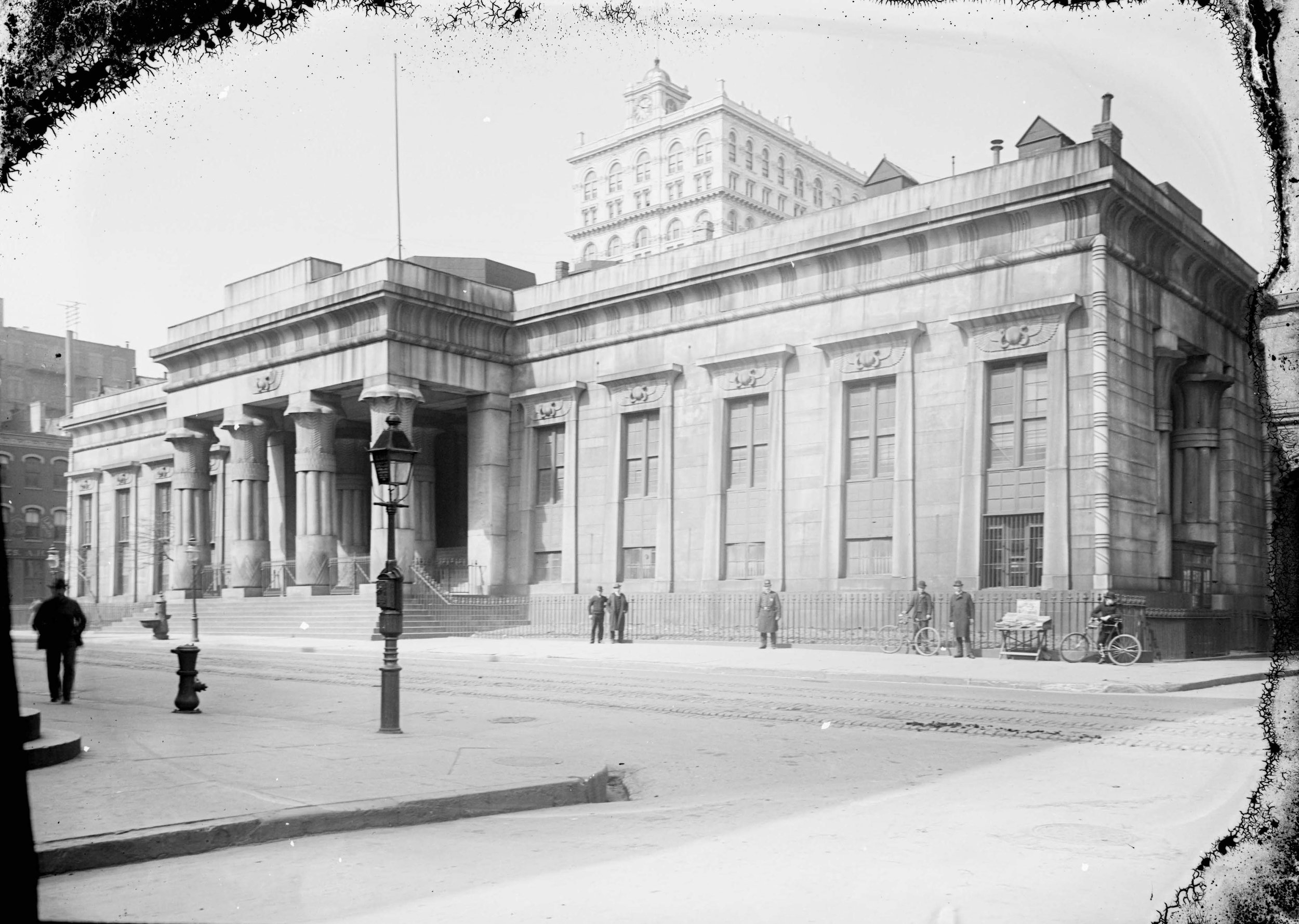
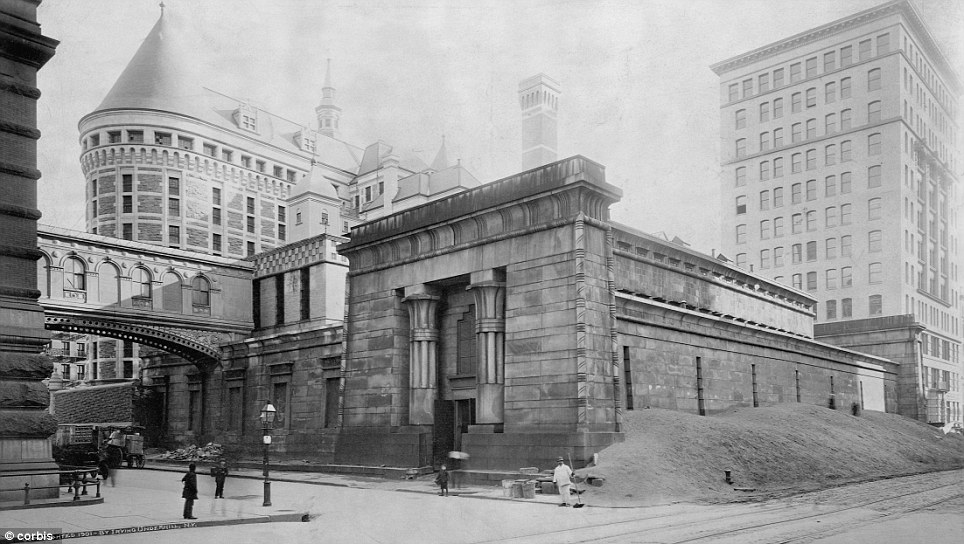
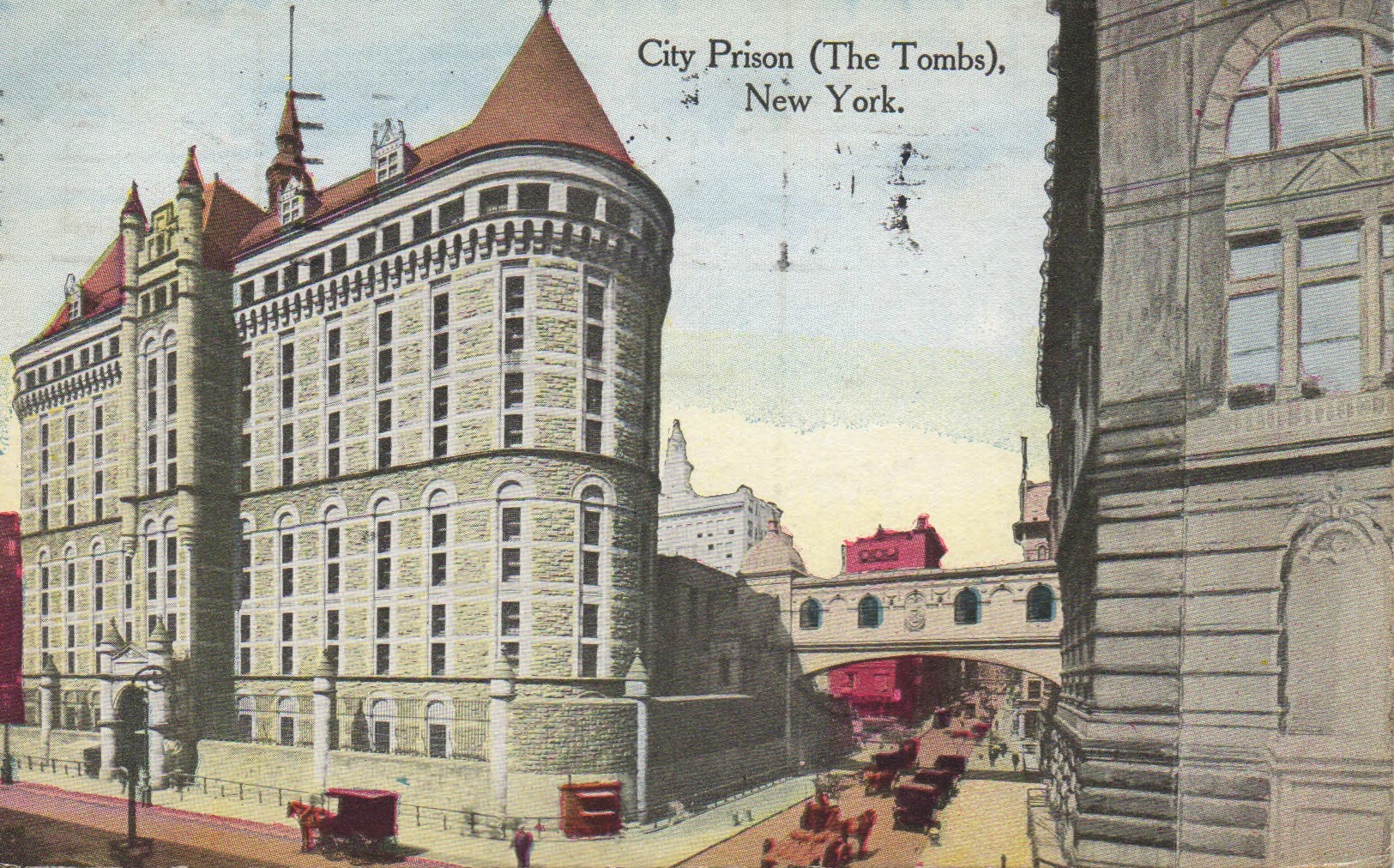
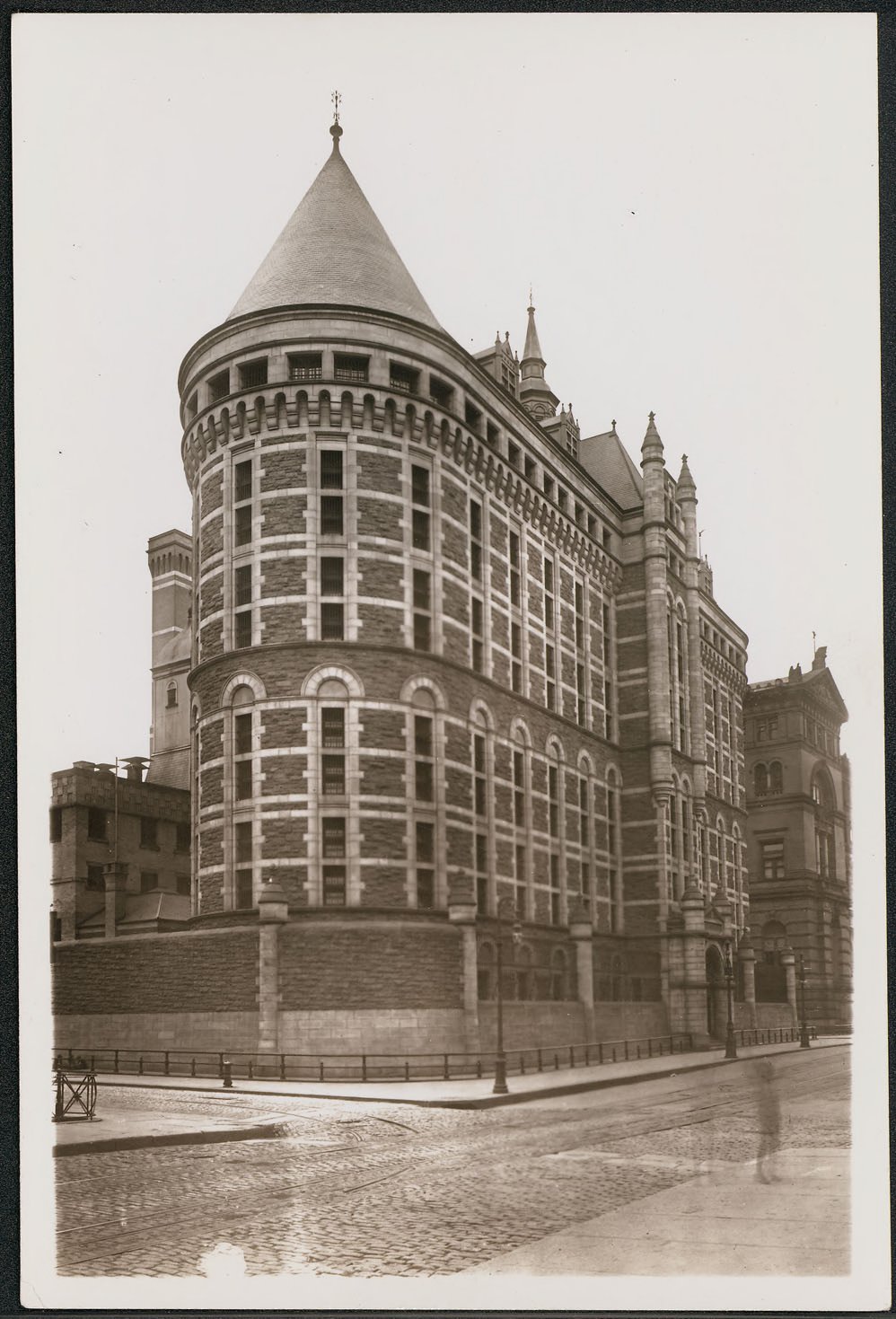
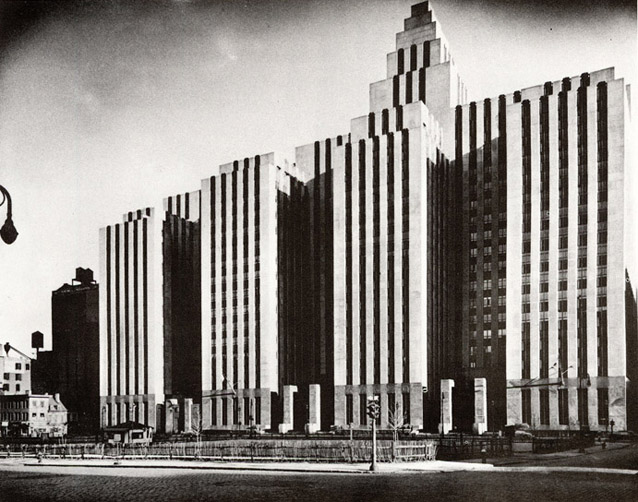

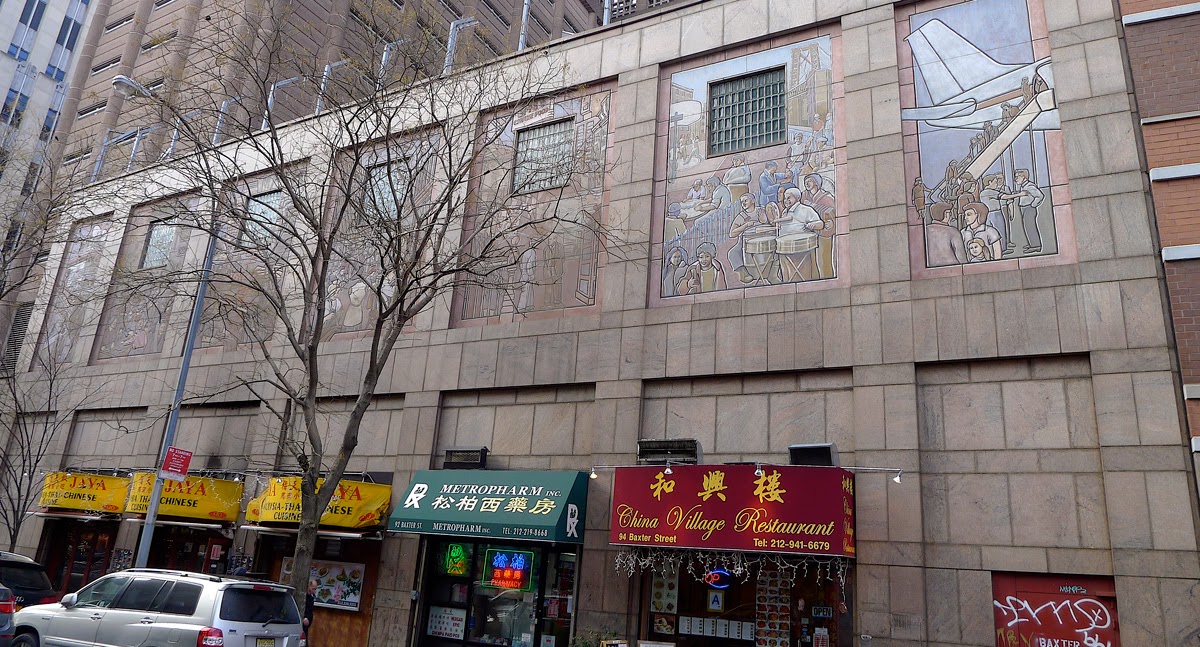
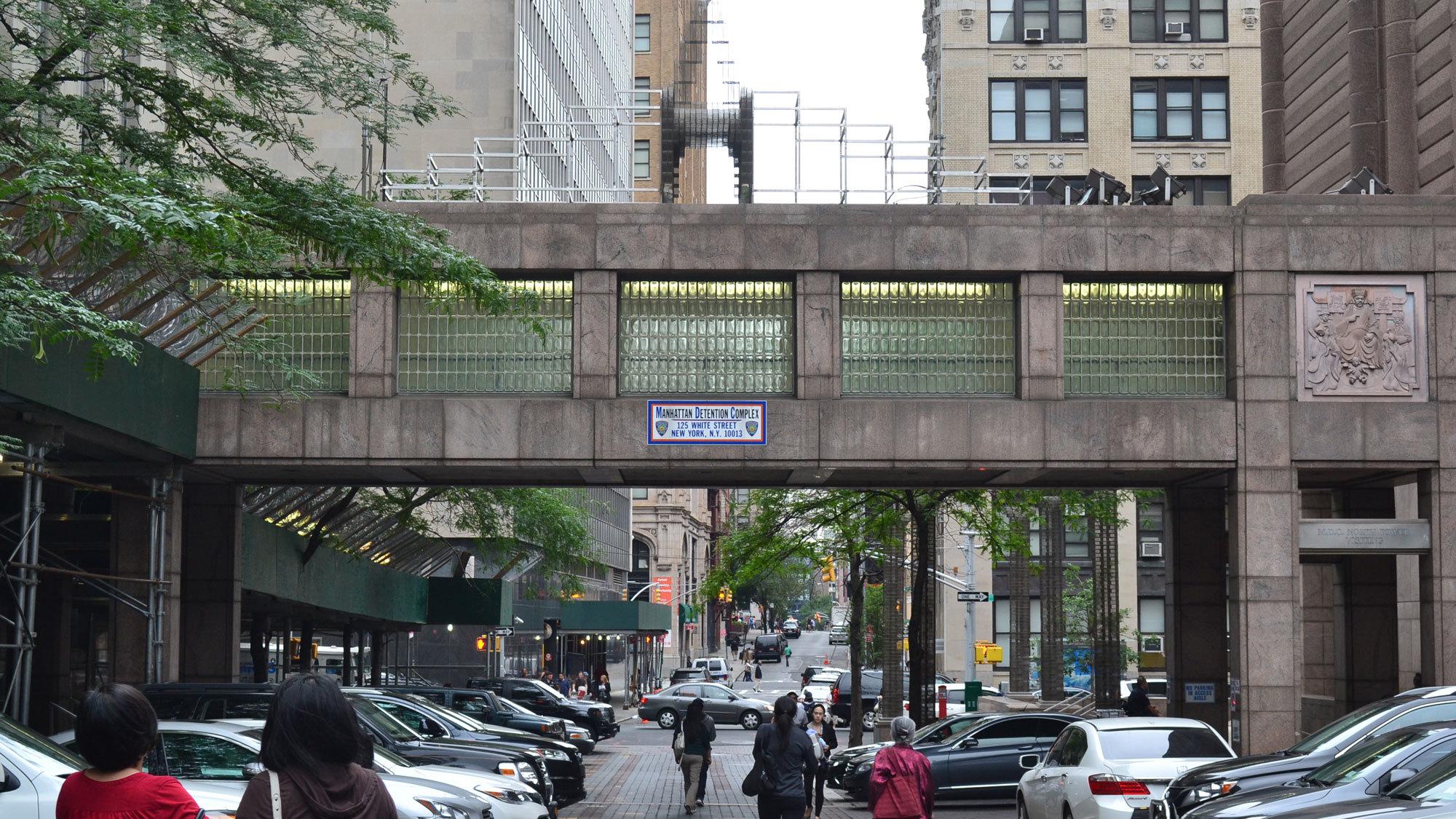

In late 2018 it was reported that MDC will be demolished and replaced with a larger jail as part of the city's plan to close Rikers Island, a jail complex in the East River that primarily serves inmates from across the city awaiting trial. Earlier that summer the city had released a proposal for a borough-based jail system, which
established a plan to develop local jails in four boroughs that would serve the same purpose of Rikers, allowing for the notorious institution to close. Plans for the new facility call for a maximum envelope of 520 feet with 1,500 inmates. As part of the borough-based plan, the jail will include space for recreation, educational programming, and therapy services, along with 20,000 square feet of community space and 100 underground parking spaces for staff. The architectural firm Perkins Eastman is working on the initial floor plans during the scoping period, as MDC along with the other borough-based jails will be designed and constructed using the streamlined "design-build" concept.
BRUTAL NYC - a survey of New York City’s brutalist architecture
Sources
Doom of the Old Tombs. The New York Times. July 4, 1896
DiIulio, John J. Courts, Corrections, and the Constitution. Oxford University Press, New York, 1990.
Padwee, Michael. "Immigration on the Lower East Side": A Public Arts Mural Created by Richard Haas. Architurist, 2014.
Creative Insider’s: Criminal Courts Building. Manhattan Cultural Council.
Shenon, Phillip. Tombs to Reopen with a New Look. The New York Times, 1983.
Spicack, Caroline. Manhattan Detention Complex Would Triple In Size Under Plan. Patch. December 11, 2018


